Traditional fire drills fall short in preparing employees for real-life emergencies during fire safety training sessions that constitute vital workplace safety components. Modern organizations are revolutionizing their fire safety methods through VR fire extinguisher training systems that offer authentic hands-on training experiences. This guide demonstrates how your organization can establish VR fire training to achieve better workplace safety while boosting participation and following fire safety standards.
Why Choose VR Fire Training?
standards. Before diving into implementation, it’s essential to understand the benefits of VR fire training and why it’s becoming the preferred choice for many organizations.
1. Realitic & Immersive Experience: The virtual reality fire training exposes workers to virtual fire emergencies that enable them to practice critical choices in a controlled hazard-filled context. The hands-on training enhances learning efficiency as well readiness levels more effectively than traditional teahing approaches.
2. Safe & Cost-Effective: The implementation of live fire drills demands significant expenses together with substantial logistical arrangements. The benefit of VR implies employees gain fire safety training while using virtual resources eliminating the requirement for real-world safety hazards during training.
3. Increased Engagement & Knowledge Retention: Multiple studies reveal that VR delivery of training achieves better student retention alongside increased commitment from learners. Virtual environments allow employees to retain crucial fire safety protocols better because they experience training through active participation.
4. Complaince & Standardization: Most industries require meeting specific fire safety standards. Through virtual reality training all staff members obtain identical training while following the standards set by their industry and professional guidelines.
Steps to Implement VR Fire Training in Your Organization
Now that you understand the benefits, let’s dive into the steps to successfully implement VR fire training in your organization.
Step 1: Assess Your Organization’s Fire Safety Needs
Organizations must perform a detailed evaluation of their fire safety hazards prior to starting VR fire training programs. Consider:
Assess the different fire hazards which exist at your workplace
The total number of personnel needing training instruction falls under this category.
Industry-specific fire safety regulations
Study all previous cases of fire incidents together with previous training learnings
The completed assessment enables you to customize the VR training program for your organization.
Step 2: Choose the Right VR Fire Training Software
The selection process for an appropriate virtual reality fire training solution directly impacts training success rate. Various software solutions require multiple factors as selection criteria.
The fire safety system must enable staff to use fire extinguishers and locate emergency exits and active decision-making in real-time simulation.
The flexible programming feature must exist within the software to enable users to change scenarios as per their workplace requirements.
The analytic system allows performance tracking for employees by monitoring their successful outcomes as well as their weaker points.
Step 3: Invest in the Right VR Equipment
High-quality virtual reality delivery depends on selecting adequate hardware components. Consider the following options:
Itty Bitty offers three corporate training headsets for selection: Oculus Quest, HTC Vive, along with Pico devices.
Several VR training programs need motion-tracking devices such as sensors and controllers to create interactive motion-based experiences.
The installed VR software demands specific requirements which may force users to procure expensive high-performance computing systems to operate the training effectively.
VR training can still be implemented by using equipment rental services combined with mobile-based VR platforms that operate on smartphones.
Step 4: Develop a VR Training Curriculum
Design a detailed educational training system after obtaining your programs with equipment. Your program should cover:
Basic Fire Safety Knowledge: Understanding fire classes, extinguisher types, and fire prevention strategies.
Emergency Response Protocols contain both procedures regarding actions to take following a fire alarm activation as well as instructions on safe building evacuation and emergency communication methods.
Wearable Virtual Reality experience enables employees to face fire threats followed by fire extinguisher practice and emergency evacuation exercises.
Step 5: Conduct a Pilot Training Session
A small team of employees should participate in a preliminary VR fire training session before it becomes a company-wide program. This allows you to:
Assess the usability together with effectiveness through user feedback
Identify technical or logistical challenges
The organization will make essential modifications to the system before launching the final implementation.
Overcoming common challenges in VR Fire Training Implementation
Organizations will face implementation challenges when implementing their VR fire training system although it presents numerous advantages to the program. Organizations face the significant obstacle of high expenses related to acquiring VR technology equipment.
Organizations seeking to reduce expenses should acquire a small number of VR headsets first before growing their headset inventory progressively. Deploying mobile VR solutions with minimal hardware requirements as well as using VR-as-a-Service providers serves to minimize organizational expenses.
The unwillingness of employees to adopt novel technology remains a challenge because they lack familiarity with Virtual Reality systems. The adoption of VR training benefits can be improved through focused education about VR systems and on-site support combined with presentations showcasing VR advantages to users.
Programmed introductory classes let workers develop ease while using new technology.
Technical problems that generate bugs alongside software incompatibilities alongside VR motion sickness affect how well training executes. Accomplishing acceptable risk reduction requires organizations to examine both hardware and software before implementation.
Training programs with alternative methods are available to support employees who experience negative effects from VR motion while IT technicians must be present to resolve immediate technical problems during sessions.
Final Thoughts
The adoption of virtual reality fire training by your organization creates major positive changes for workplace safety. The system increases staff readiness while improving their participation levels and represents a safer replacement for classic fire practice exercises. The combination of proper steps described earlier helps you develop an effective fire safety training program which simultaneously safeguards both your workplace and workers.
Your organization needs improved fire safety education to reach the following level of performance. Put VR solutions into practice right now to transform the effectiveness of fire training systems.


